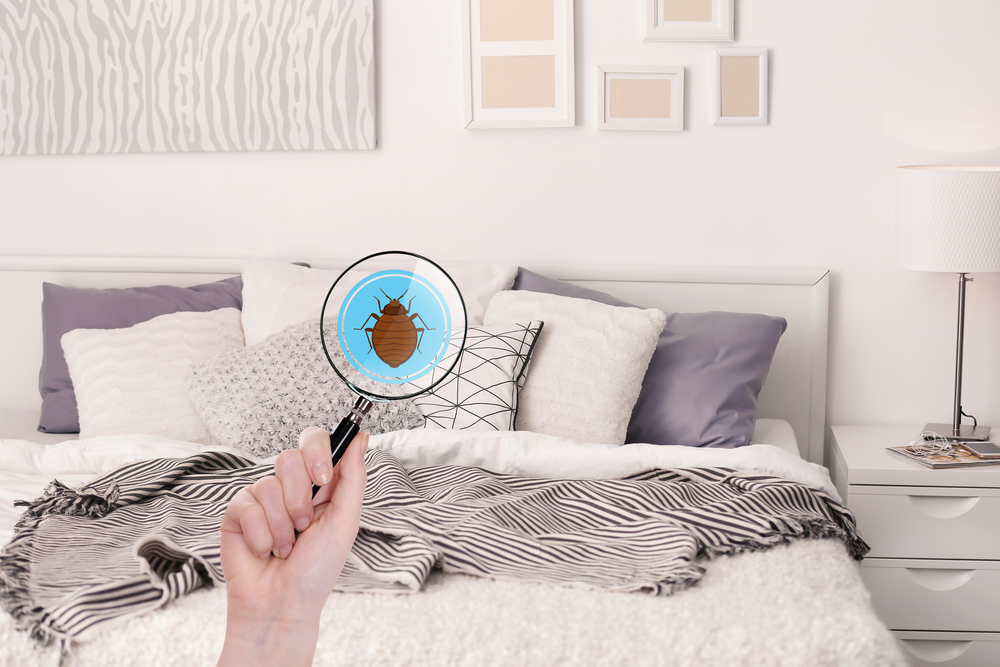What is a bedbug?
A bedbug (cimex lectularius) is a species of insect that are under the bug order Heteroptera of
the family Cimicidae. They primarily feed on the blood of warm-blooded creatures such as
humans and other animals. The size of these insects varies from 4-5 mm for adults and has a
wide and flat body with dark to reddish-brown colors. The non-functioning wings are not very
visible among these creatures. Their scent gland secretes an odor that has been observed to be
oily and very noticeable. The female, when fully mature, can lay up to 200 or more eggs within
a reproductive period.
These are among the most common parasites that plague the human race. Found in almost all
places where humans and livestock are present. Non-active during the day and comes out
during the night to feed, their bite is bothersome and leaves red itchy watery bumps all over
your body. Luckily, it has been found to not cause or spread diseases. Several species of
bedbugs also live on animals and all of which have been found to bite humans too.
Getting rid of bedbugs need extensive investment in time and effort. These pests are like
cockroaches – resilient and hard to eradicate. You may have to try different ways and methods
to fully treat and control their numbers. If the following methods don’t work, you may need to
call in bed bug professionals.
1. Identify and contain
If you think you have an infestation, confirm it through the help of a hired professional.
Some experts use technology to find these creatures. Dogs are even found to be of great
help at detecting bedbugs – and their eggs, far more accurately than humans, through
their scent.
Usually, bedbugs hide under mattresses, baseboards, furniture, electrical outlets, and
other home items or decorations. They find refuge in every nook and cranny, in any four
corners.
2. Keep things spick and span
Sweeping regularly is good, but using a vacuum cleaner takes things up a notch. Aside
from keeping your place dust free, utilizing a vacuum also contains these bedbugs for
you to dispose of properly, at your convenience.
Run the vacuum thoroughly on all spaces you think bed bugs may hide – handheld
vacuums or long nozzle ones can make it convenient to cover hard-to-reach places. Be sure to vacuum under your bed, closets, carpets, curtains, and other fixtures inside the
household.
3. Out with the old
Yes, the idea of keeping old items is enticing. Sentimental value is of great value. But can
easily be a cliché. Thus, we welcome the Era of Minimalism! It’s keeping things that
“spark joy” – in the words of the famous Marie Kondo.
And I say this with certainty, that linens, sheets, old clothes, shoes, and other items that
housed bedbugs, do not spark your joy.
It is best to just throw them out! Bedbugs are sub-thermal creatures in nature, thus
withstanding high levels of heat.
4. Treat it with heat
If you can’t throw them away, wash them with hot water for some time and tumble-dry
them on the highest heat setting. After which, you can go the extra mile and leave it out
under the sun. You can also hire a pest control professional to do heat treatment for
you. The bonus – they are licensed and insured. Peace of mind is certain.
5. Chemical agents
Lastly, insecticides and chemical agents are commonly used to get rid of any crawlers.
Although some are effective, bedbugs have become resistant to these chemicals. Be
sure to try out products that have good reviews and ratings – especially when
environmental safety is considered.
Practice a bedbug-free lifestyle!
After these five methods have been realized, the next step to take is to keep the bedbugs away.
Maintain a clean and orderly environment in your rooms and the rest of the household. It takes
a proper mindset and patience to keep your living space free from these bloodsucking
troublemakers. Decluttering your home and keeping it free from these creatures is a must. It is
recommended to do a regular bed bug inspection after every treatment – because who wants
to live with bedbugs after all?

